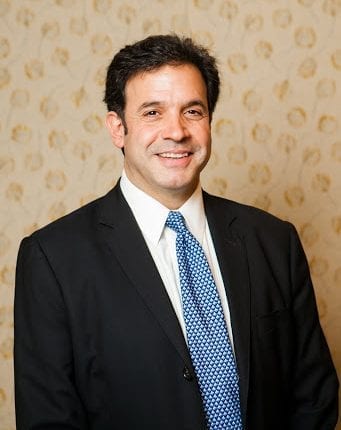In a paper just published in the prestigious journal Neuron, Harvard Medical School/Mass General Hospital Geneticist Dr. Rudy Tanzi, together with lead author, Dr. Jaehong Suh and their team, identified two rare mutations in the human gene called “ADAM10” that lead to the most common, late-onset variant of Alzheimer’s. Tanzi’s research suggests that the ADAM10 gene makes an enzyme called alpha-secretase, which cleaves the Amyloid Precursor Protein (APP) to prevent the formation of beta-amyloid, the toxic protein that triggers brain pathology in Alzheimer’s disease.
This new landmark genetic discovery by Rudy Tanzi, who is also Research Consortium Chair at Cure Alzheimer’s Fund, further buttress the widely-held “Amyloid Hypothesis” and suggest specific new therapeutic approaches to stopping Alzheimer’s disease.
In their study, Tanzi and Suh first identified two new human gene mutations in ADAM10 and then inserted them into Alzheimer’s mouse models to track their effects in the brain. Subsequently, the team was able to demonstrate how the mutant genes diminish alpha-secretase activity and led to increased levels of beta-amyloid, the main component of senile plaques in Alzheimer’s disease.
These findings are the first to document novel Alzheimer’s gene mutations in animal models since the mutations in the original four Alzheimer’s genes – APP, PSEN1, PSEN2, and APOE – were discovered in the 1990’s.
Furthermore, the effects in mouse brains strongly suggest that diminished alpha-secretase activity owing to the ADAM10 gene mutations causes Alzheimer’s and therefore support ADAM10 as a promising therapeutic target for the treatment and prevention of the disease. “If we can find or develop a drug to safely increase alpha-secretase activity,” said Tanzi, “that would decrease the accumulation of beta-amyloid plaques and slow down or even stop the onset of the disease.”
Cure Alzheimer’s Fund president and CEO Tim Armour says: “These discoveries are validation of the aggressive gene-centric approach long supported by Cure Alzheimer’s Fund. With this new data, we have two more important pieces filling out the large puzzle of how Alzheimer’s disease develops in the human brain. It’s that much closer to a complete picture, and brings us that much closer to a cure.”
An abstract of the paper can be found here.





